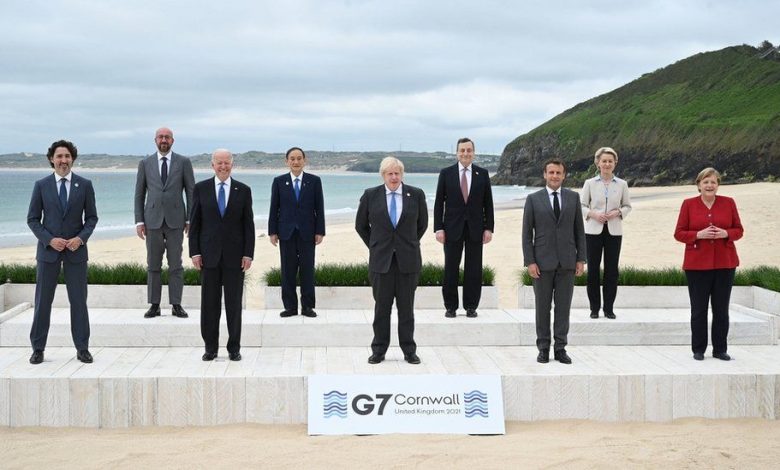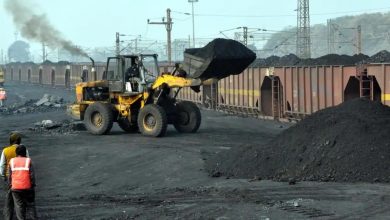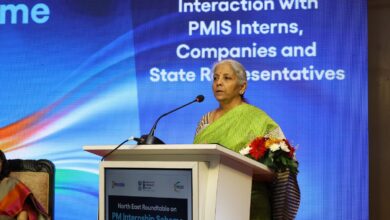This Years G7 Summit Takes Place Against Backdrop Of A Growing Hunger Crisis
The situation is bad as nearly 250 million persons are on the brink of famine

This year’s G7 summit takes place against the backdrop of a growing energy and hunger crisis. Geopolitical questions and the war in Ukraine dominate the agenda. While G7 leaders meet in a 5 star castle hotel in Elmau, Bavaria, Germany (in the Alps close to the Austrian border) from 26 June (Sunday) till 28 June (Tuesday) before they move on to the NATO summit. On Saturday, 25 June, a big mobilisation / march takes place in Munich.
António Guterres, UN secretary general, has already warned that the coming months threaten “the spectre of a global food shortage” that could last for years.
The high cost of staple foods has already raised the number of people who cannot be sure of getting enough to eat by 440m, to 1.6bn. Nearly 250m are on the brink of famine.
If, as is likely, the war drags on and supplies from Russia and Ukraine are limited, hundreds of millions more people could fall into poverty.
While floods & heavy rain due to climate change swamp parts of China, India & Bangladesh and destroy paddy crops. villages have been marooned and crops have been damaged badly.
G-7 should address the issue of Loss & damage- Loss and damage are adverse impacts of human-induced climate change that cannot be avoided by mitigation or adaptation. . Loss and damage can be caused by extreme weather events (e.g. typhoons or floods) and slow-onset processes (e.g. glacial melting), as well as events triggered by a combination of the aforementioned (e.g. glacial melting leading to glacial lake outburst floods). A main distinction can be made between economic loss and damage (e.g. property and infrastructure) and non-economic loss and damage (e.g. lives, biodiversity, territory, identity, physical and mental health).
What is needed-The IPCC 6th Assessment Report (AR6) WGII (2022) clearly showed: “Human-induced climate change, including more frequent and intense extreme events, has caused widespread adverse impacts and related losses and damages to nature and people, beyond natural climate variability (…). Across sectors and regions the most vulnerable people and systems are observed to be disproportionately affected”. So far, the people, communities and countries that are particularly affected have received no adequate financial support to manage climate risks and address loss and damage from extreme weather events and slow-onset processes. By 2030, economic cost of L&D are estimated to reach 290 – 580 billion USD in developing countries alone, let along the non-economic costs. New and additional funding as well as adequate financial arrangements are needed to close protection gaps and bring existing tools including insurance, social protection schemes, national loss and damage mechanisms, tools for climate induced migration, etc.
What are vulnerable countries demanding?- At COP 26 and during the Bonn Climate Change Conference, the negotiating bloc Group of 77 developing countries+China, proposed a solution to the gap in finance available to address their needs in the form of a L&D Finance Facility LDFF which will be able to provide new financial support in addition to adaptation and mitigation finance, to developing countries to address loss and damage. Civil society is supporting this demand with concrete suggestions on how such a facility could look like. The proposition is being blocked by developed countries.
For the first time, G7 Development Ministers, as well as Climate, Energy and Environment Ministers, have explicitly recognized the urgent need for financial support for developing countries to avert, minimize and address economic and non-economic loss and damage from G7 members. They want to work towards a Global Shield against climate risk; support climate risk insurance and social protection systems; and increase their funding for climate adaptation and resilience building.
What is the Global Risk Shield? The aim of the global shield is to foster more systematic, coherent and sustained financial protection to help reduce the negative impacts of climate change on vulnerable countries and people. Building upon existing instruments and partnerships, including the G20+V20 InsuResilience Global Partnership, the Global Shield wants to 1. Strengthen cooperation within the global climate and disaster risk financing architecture to overcome fragmentation; 2. Establish a truly global, flexible and collaborative financing structure; 3. Commit to sustained protection from increasing climate risks (primarily through premium and capital support).
What should G7 heads of governments decide on the G7 summit in June?
The G7 members should:
Commit to providing new and additional climate finance to address damage and loss to developing countries at a scale commensurate with their existing and future needs
Commit to making the Global Shield against climate risks functional, working together with affected developing countries, based on their needs. The Global Shield must provide financial and capacity support to address economic and non-economic loss and damage from extreme weather events and slow-onset processes.
The writer of this article is Dr. Seema Javed, a known Environmentalist, Journalist and Communications Expert




